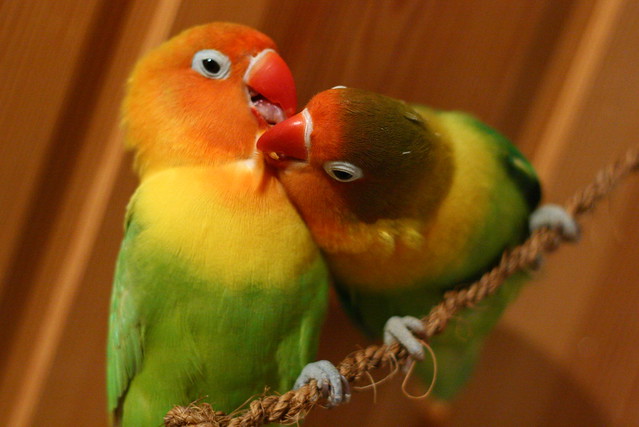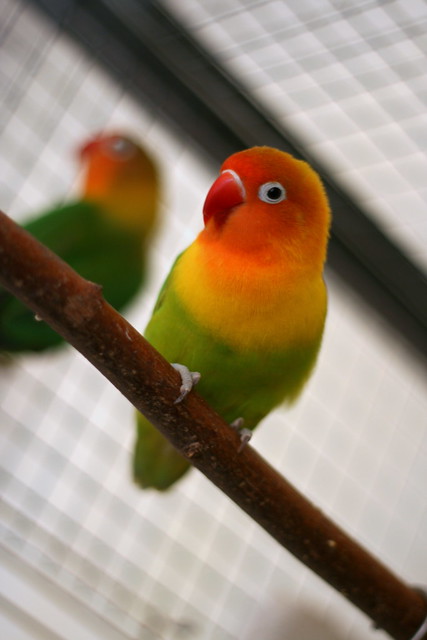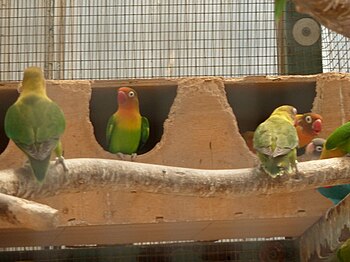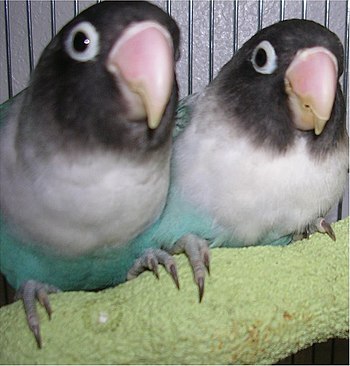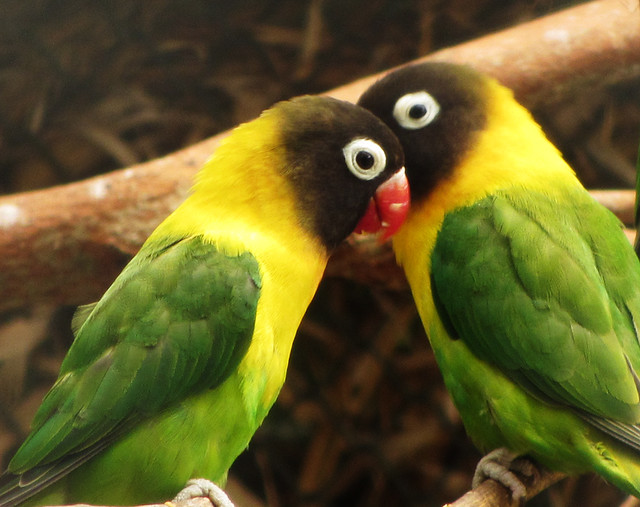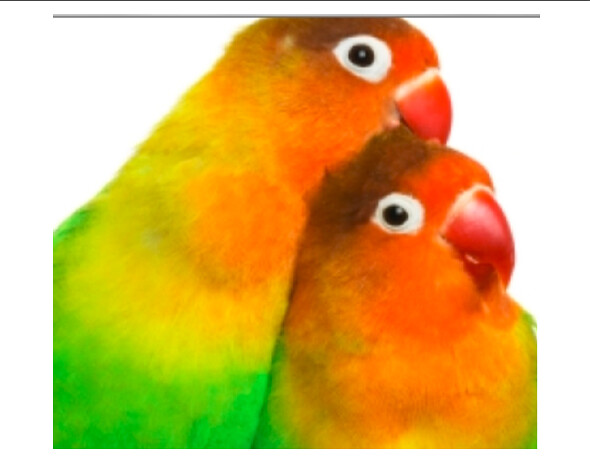 |
| A trio of peach-faced lovebirds. The left one has a standard "peach-face" crest, the middle one is a peach-face and a fischeri hybrid (as indicated by the two-colored beak and smaller body size) and the right one is a color mutation aptly named as "orange-faced" (Photo credit: Wikipedia) |
Many people believe lovebirds must be kept in pairs. This is simply not true. A single lovebird makes a better pet because it bonds to you rather than to another lovebird. While it is easy to keep a pair of lovebirds tame if you plan on spending lots of time with your bird you can keep it alone. However, if you work long hours and don't think you'll have a lot of time for your love bird, I recommend you get him/her a companion. This will keep your lovebirds happy and prevent boredom. It is important to realize that while lovebirds are a small parrot, they have the intelligence and abilities of some of the largest parrots.
They never stop amazing me with their ability to escape their own cages. I have to put copper wire on the cage doors to keep them in, and sometimes they figure out how to untwist the wire and open the door!
Lovebirds will sometimes try to become the little bosses of the household. I recommend using the same type of gentle dominance training that is used for larger parrots.
Are you looking for a bird that you can teach to talk? Lovebirds can learn to mimic sounds and speech on occasion. However, I don't recommend that you buy any species of bird only because of the expectation that it will speak; even the famous African Greys sometimes don't learn to speak. So, if that is your only reason for buying a bird, I'd seriously urge you to reconsider as the bird could end up abandoned because of your own disappointment.
In my opinion, love birds and parrots both make great pets even if they never utter a word. We have both in our home. The lovebirds chatter away all day, never making a sound that anyone can understand, except as being simply 'noisy chatter.' However, our Double Yellow Head parrot makes up for it; his vocabulary is very long, extensive and he is constantly talking.
If you decide to breed love birds just remember they are prolific breeders. You may soon, as we did, find our home overrun with lovebirds! And, as a word of caution, "do not" put bark chips in the nest of the baby birds. Though the odor is pleasant to humans and is good for older birds it is too strong for baby lovebirds. I must admit I learned the hard way and had casualties on my hands! Paper is the best thing to put in the nest along with some alfalfa. Do not get powdered alfalfa, rather dried alfalfa blades. If you decide to use paper, do cut the paper (newspaper is best) in long strips and put it beside the nest. Mama will take it into the nest. And, remember if mama snaps at you she is only protecting her nest!
My favorite lovebird is Lucky, so named as it was our first clutch and she was the only one, of six, that survived when I put the bark chips in the nest.
We do not have an aviary breeder, rather, our lovebirds are paired off in separate cages. The best way to tame babies quickly is to remove the babies from the next when they are about two weeks old and hand feeds them. This way, the birds get the best of both worlds: the immunity conferred from their parents and the tameness that comes from being handled by humans.
Our lovebirds are abundance weaned so that they are happy, well-adjusted birds. We feed them pellets, a good seed mix, alfalfa, wheat grass, quinoa, sprouted beans, and other veggies and fruits. And, oh yes! Lovebirds love to not only eat grapes but to toss them around also. In short, lovebirds love playing. They keep us entertained for hours. If you decide to get a lovebird for a pet, you will have made an excellent choice!
|


